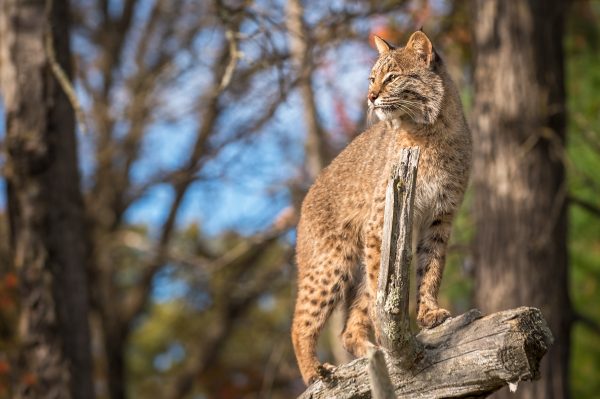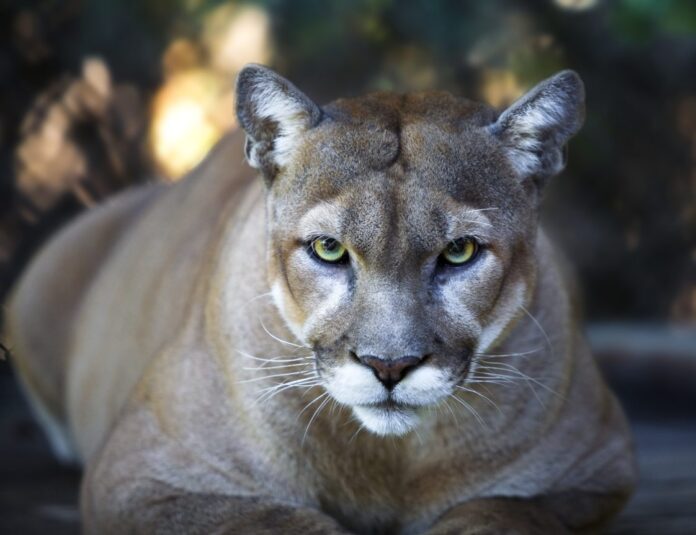AUBURN UNIVERSITY, Ala. – The existence of Bigfoot is wildly debated across the country. However, in Alabama, another creature’s existence takes center stage in many discussions: mountain lions. The presence of these big cats is well documented in other parts of the country, but their existence in Alabama seems to be a mystery. Are they here or are they not? An Alabama Cooperative Extension System wildlife professional helps shed some light on this mystery.
Mountain lion characteristics
The term mountain lion is just one of the many names that people use to refer to the animal scientifically known as Puma concolor. Other names include cougar, panther, puma, mountain devil, mountain screamer and others.
Mark Smith, an Alabama Extension wildlife specialist, said mountain lions are the second largest feline in North America. Jaguars (Panthera onca), which are found in the extreme southwestern United States and throughout Mexico, are the largest.
“Mountain lions weigh anywhere from 65 to 265 pounds and can be up to 8.5 feet long, from head to tail,” Smith said. “Adults are sandy brown to tawny gray in color with a whitish belly.”
A characteristic that sets mountain lions apart from many other big cats is they do not have spots or stripes.
The big Alabama debate
For decades, many people in Alabama claim to have encountered a mountain lion. However, you have to go all the way back to 1956 for the last confirmed sighting in the state.
“The closest known mountain lion populations to Alabama are in western Texas and southwestern Florida,” said Smith, who is also an Auburn University professor in the College of Forestry, Wildlife and Environment. “Since the 1956 confirmation in Tuscaloosa County, Alabama wildlife officials have yet to confirm any of the sightings that they receive regularly.”
State wildlife officials frequently field calls and emails about mountain lion sightings. However, there has yet to be a reliable verification in almost 70 years. According to Smith, many of these sightings come from people that are unfamiliar with mountain lions. This is unsurprising, being that people in Alabama are unlikely to have seen a mountain lion in the wild before.
“To put things in perspective, think of the hundreds of thousands of game cameras that are put in the woods each year to monitor wildlife,” Smith said. “Yet we haven’t been able to produce a clear picture of a mountain lion in Alabama. More interestingly, given all the roads and highways in Alabama relative to the movement patterns of mountain lions, we would likely have had one hit by a car. In some areas of their western range, that is the leading cause of mortality.”
What are people seeing?
Even with the data and years against them, people still claim to have seen the supposed Alabama mountain lion. If it is not a mountain lion, then what are they seeing? Smith said there are several other animals that people misidentify as a mountain lion. The bobcat is one of the most common.

Bobcat (Alabama Cooperative Extension System)
“Bobcats occur in large numbers throughout Alabama and the southeastern U.S.,” Smith said. “They are much smaller than mountain lions are, weighing about 15 to 35 pounds. They also have a short 4- to 8-inch tail and a spotted coat.”
Being so different in size and appearance, you may wonder how these two cats could ever be confused for one another. Smith said is it in bobcats’ nature to generally avoid humans. So, people may not get a good look, making it hard to tell the difference.
As strange as it may seem, some mountain-lion sightings have turned out to be other animals, such as feral cats, domestic dogs, coyotes, black bears and even deer. From an outside perspective, these animals obviously look nothing like a mountain lion. However, Smith said certain conditions can affect what people see, making identification difficult.
“Many pictures and videos of supposed mountain-lion sightings turn out to be feral cats, once the animal’s size is compared to other objects in the background,” Smith said. “Also, if seen at the right angle or under poor lighting conditions, a relatively common animal can start to take the shape of something completely different.”
Mountain lions in Alabama? The data says no
Aside from the rare possibility of a released or escaped mountain lion, the data says there are no populations of this big cat in Alabama. To uncover more of the mystery surrounding mountain lions in Alabama, read the Alabama Extension publication Alabama Cougars: Sorting Fact From Fiction at www.aces.edu. If you think you have a mountain lion in your area, check out the Gathering Evidence to Confirm Cougars in Alabama video series on the ACES – Fresh from the Field YouTube channel.




























